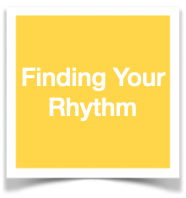Can A Book Help Me To Run?
If you consider Can A Book Help Me To Run? The answer is most definitely yes. However, it may surprise you that it doesn’t have to be about running or a technical guide to training. But they can still keep you lacing up those running shoes. Let me explain below.
A Little Context
There are thousands of books widely available, some well-known some a little more obscure. The books below are just ones I have read and taken a benefit from. These are short summaries with links to Amazon where further reviews can be found.
To begin, I mentioned in a previous post a book was simply about Walking.
1 – Walking: One Step at a Time by Erling Kagge
I came across this book in a review published in Esquire magazine in 2019. The magazine was given out free at a central London station and I walked to my office and placed it in my locker. There it sat unread until some time in 2021 when my employer decided to clear all the lockers and send the contents to their respective owners. Covid had meant I had been working from home for over a year. My box of possessions found its way to me. I dipped in and out of this magazine from time to time over the next few weeks.
An article piqued my interest based on the book by Erling Kagge. He seems like an impressive character being the first person to reach the North Pole, South Pole and the summit of Mount Everest on foot amongst other notable feats. The article had some book excerpts, and I liked the style and content.
The book is not long and consists of philosophical ideas about walking. Don’t worry it’s an easy read. In simple terms, it’s about how important walking is for us. You stop walking and you stop living.
This was a book I left on a coffee table and returned to frequently.
It is thought-provoking and as an established walker and runner, it made me realise we need to keep moving. Get out at every opportunity as there is no such thing as bad weather!
2 – Born To Run: The Hidden Tribe, the Ultra-Runners, and the Greatest Race the World Has Never Seen by Christopher McDougall
Besides having a really long title this book is very different and is probably the most well-known of the books that I’ll describe in this article. It tells the true story of the author researching and immersing himself into the world of ultra-distance running, running without shoes and discovering a tribe of people who are all brilliant runners.
It raises some interesting concepts, such as humans are natural long-distance runners and it’s something we are better at than we realise. Many animals are much quicker than us over a short to medium distance but they need to rest soon after that. Humans have an innate ability to just keep going. We evolved from a species that wandered around and ran our prey down over a period of time. Similar to running a marathon?
There is also a debate as to whether the modern-day shoe has evolved into something which is worse for us than better. That they cause injuries as opposed to preventing them. Kind of ironic given the huge form of the latest running shoes.
The book additionally has some focus on health. For example, the reclusive Tarahumara display outstanding physical capabilities and little or no modern sickness. They run everywhere and don’t eat a sugar-saturated diet.
The main character is Caballo Blanco, an American ultra runner. The book details his mythical running exploits. The style of this book is more novel/artistic. It does however give a great insight into long-distance running. Caballo has sadly passed since the book was written
Personally, this book made me want to keep trotting out off the beaten track and to really continue to lose myself in the “running moment”.
At the time of writing a second book has been published which I haven’t read, but I understand is a training guide. There were rumours of a film with Matthew McConaughey but it never made it to the screen.
3 – Chi Running: A Revolutionary Approach to Effortless, Injury-Free Running by Danny Dreyer.
This book also competes for the longest title. I read it after a recommendation.
While stretching in a central London gym a guy near me was also limbering up and wearing these. I was interested in how he found them so struck up a conversation. He was super enthusiastic about how good they were and told me a story about of one his friends. The friend was an overweight non-runner who trained using the Vibrams after reading a book called Chi Running. The book had some interesting concepts and techniques. A sub 3.30 London Marathon followed.
I did try five fingers, but they weren’t for me. That’s for another time.
A few weeks later I did buy and read the book which is a guide to improving running style and benefiting from it by reducing injuries. Much of this involves engaging the core during running and strengthening the core to enable that. There is also a forward lean during the activity which is essentially a trunk pivot from the hip. The idea is that this makes you almost fall due to gravitational pull thus powering yourself forward. I have totally simplified that but it made sense to me.
Other parts I found useful were some post-run leg stretches which included lying on your back with legs straight against a wall. This really does make you feel better and is a nice way to cool down.
The other concept was eating different things for breakfast than we’d normally consider, such as salad to hydrate yourself first thing. It’s not something we commonly do but again feels like a really solid idea.
It’s probably time I reread this book. It definitely made me consider body position during running even though I don’t think I could honestly say I implemented all the techniques
4 – GANG FIT: Freedom & Strength by Guru Anaerobic
I promised Guru a rambling review a while back after an exchange on Twitter as I felt his writing had a very powerful positive impact on me.
I don’t quite recall how I came across him but as a runner one of the first things I read of his struck a chord. He said something along the lines of “if you don’t eat and then go for a run expecting to lose weight you are a moron.” This made me laugh and was an insight into his approach.
His writing style is often simplistic and also sometimes very technical with credited sources, but nearly always brutally to the point. If it’s not it’s usually because there’s a story to tell with a big ending. I say simplistic but Guru has published works so what do I know?
I listened to his books while walking mostly, by getting my phone to read the text in a clipped middle-class accent which emphasised my appreciation of the humour in the multiple sweary bits.
Anyway, that’s enough about his style.
His books mention zombies, being unemployed and going against the perceived right way to do things. This absolutely resonated with me, middle-aged, years into doing something with little pleasure and a few life events under my belt which have eventually become the trigger for me to tear quite a few parts of my life up.
The biggest is to adopt a Gang Fit approach and look at things from a perspective of mine and my family.
I had been in corporate land for years where I have been told how to think, how to behave, that diversity and inclusivity is quite rightly the correct thing to do so long as you diversify and include as we tell you to. Guru’s writing articulated many things I’d been pondering in a way I couldn’t.
Guru’s teachings identify Slipper Index (which really should have a trade mark), eating like a native hunter-gatherer and abstract ways of not only considering the world around you but also how you are considered in the wider societal construct.
His writings are also broad in content from nearly killing yourself sprinting up a hill with mates, rolling dice to randomly visit a new place or hanging out in a pound shop.
These are subtle insights. Guru has clearly taken the time to practice what he preaches. He’s right that the pound shop is a lens into a place and the Slipper Index (c) is a valuable checkpoint of how down-market a town is.
The hill sprints are the kind of subject he covers in detail as his background is sprint coaching. There are however many interesting topics around strength training, nutrition and being a zombie. He does love an impossible challenge and calls out things we can and should test ourselves with.
His books aren’t lengthy, being made up of multiple essays and just like Born To Run, they are not currently planned feature films.
But they do tell his opinion. I don’t always agree with parts, sorry Guru, but I would be surprised for anyone to work through Gang Fit and not come out the other side with a different perspective on many things.
For me it made me consider how my life was bobbing along and now I’ve made a couple of big changes and like how it feels.
Keep spreading the knowledge Guru !
What Can You Take From Each Book
1 to keep moving, at some stage, you won’t be able to
2 we are meant to run
3 we are never too old to learn something
4 be GANG FIT!
I hope you found this of interest. Please let me know if you have read these books and taken some inspiration, or indeed any other suggestions to read in the comments.
TLDR – read these books, ponder the concepts, keep moving









One thought on “Can A Book Help Me To Run? ”
Comments are closed.